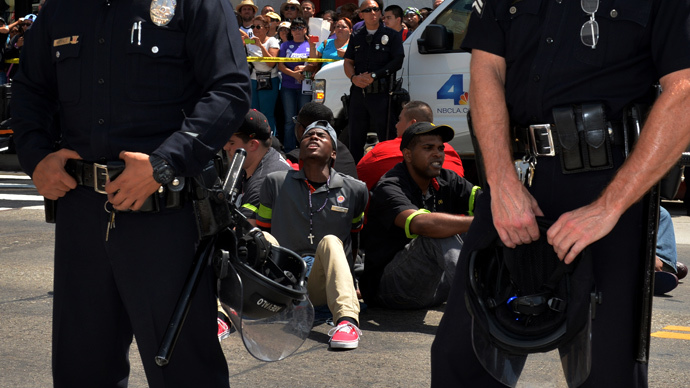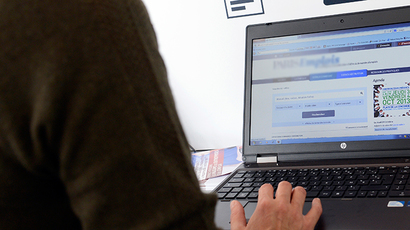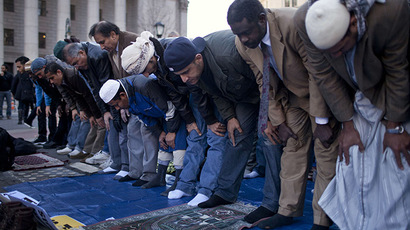California police spent $45mn on spy gear with little oversight

Police departments across California spent more than $45 million on surveillance equipment over the course of a decade with little to no legislative or public oversight – and without the public's knowledge, according to the American Civil Liberties Union.
The ACLU report, titled 'Making Smart Decisions about Surveillance: A Guide for Communities,' reveals how California law enforcement took advantage of millions of dollars’ worth of federal surveillance gear to sidestep city council oversight and boards of supervisors. Police also avoided consideration of costs and benefits and left the public in the dark as to how law enforcement was using the equipment to track their lives.
RT Californi4News: #California#News ACLU: police surveillance gadgets lack oversight: The American Civil Libert... http://t.co/TceZ7yQNxs
— Anthony Hiberts (@Anthonyhead13) November 12, 2014
“After revelations of mass surveillance by the NSA, the public isn’t buying the ‘just trust us’ approach anymore. The public expects to know why surveillance is being considered, how it is going to be used and what safeguards are in place to guard against misuse before any decisions are made,” Nicole Ozer, technology and civil liberties policy director for the ACLU of California, said in a statement.
READ MORE:80% of Americans concerned about govt surveillance online - survey
The report surveyed 118 California cities and towns and found that 90 were using surveillance technology. Only five had carried out public debate before acquisition, and four had public policies concerning use and limits. In total, the 118 cities and towns had spent over $45 million on equipping their police departments.
.@ACLU_NorCal map shows importance of not just fed but local police surveillance tech issues https://t.co/Tt308LdqUxpic.twitter.com/skekeCqxLb
— Elizabeth Joh (@elizabeth_joh) November 12, 2014
The majority of police units were using license plate readers
(57) and video surveillance (62), but many were using a multitude
of devices to track and survey people.
For example, the automatic license plate readers (ALPR) is a camera system mounted to a police car or light that scans license plates that come into view. They are often used to look for stolen vehicles, but they can record the time and place of every single vehicle that drives by.
Facial recognition software, meanwhile, identifies a person in photos or video based on various characteristics of the person’s face. The accuracy of facial recognition, however, can vary widely.
Automated social media monitoring consists of software tools that collect posts and other information on sites such as Twitter and Facebook. These tools may also analyze the collected data in order to learn information such as the social connections or political views of individuals.
Another device – the International Mobile Subscriber Identity catcher (IMSI) – emulates the functionality of a cell phone tower in order to interact with a nearby mobile phone. Commonly known as Stingrays, a popular brand name, they can be used to capture and intercept the contents of communications, including calls, text messages, or internet activity. Many IMSI are used in dragnet fashion, scooping up information about every phone in range.
READ MORE:New Jersey Muslims outraged by NYC mayor’s support of surveillance
In one instance, the report said the San Jose Police Department obtained a drone with federal funding with no public debate and no policy safeguards in place. After protests, the police department apologized, grounded the drone, and initiated public outreach.
ACLU California is proposing a measure called the Surveillance and Community Ordinance to provide transparency, accountability, and oversight. The ordinance is being drafted and will be introduced in the coming weeks.
READ MORE:FBI wants to hack computers globally, seeks search warrant expansion
The Council on American-Islamic Relations, as well as the Asian Americans Advancing Justice-Asian Law Caucus, have also both joined the ACLU to endorse the need for oversight ordinances. They are quite familiar with how unchecked surveillance often has a disproportionate impact on communities of color and religious minorities.
“Communities are increasingly concerned about making sure that time, energy and resources are not spent on expensive, ineffective and overly intrusive surveillance systems that create more problems than they solve,” San Francisco supervisor John Avalos told the ACLU. “That’s why public transparency and engagement are key to any decision about whether to use surveillance technology. If surveillance technology is to be used, clear rules must be in place to ensure transparency, oversight and accountability.”














